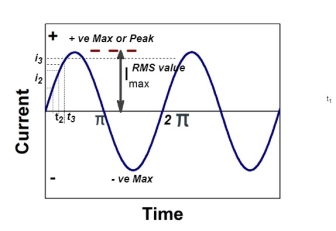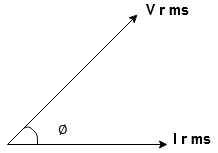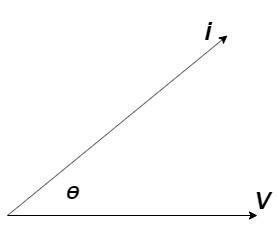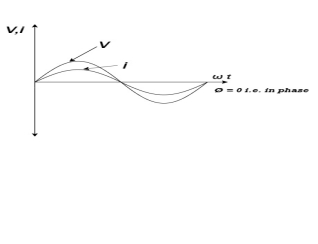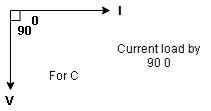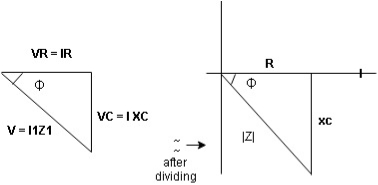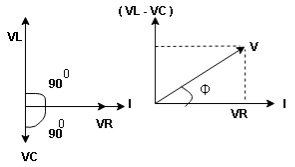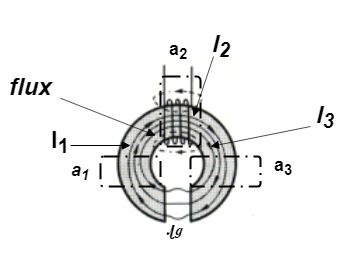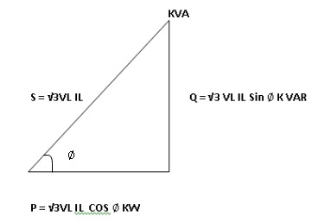Unit – 2
Steady- State Analysis of Single-Phase AC Circuits
Peat to peak value: The value of an alternating quantity from its positive peak to negative peak
Average Value:
The arithmetic mean of all the value over complete one cycle is called as average value
For the derivation we are considering only hall cycle. Thus i = Im Sin
Solving We get
Similarly, Vavg= The average value of sinusoid ally varying alternating current is 0.636 times maximum value of alternating current.
RMS value: Root mean square value
The RMS value of AC current is equal to the steady state DC current that required to produce the same amount of heat produced by ac current provided that resistance and time for which these currents flows are identical.
I rms =
Direction for RMS value: Instantaneous current equation is given by i = Im Sin but I rms = = = = Solving = = Similar we can derive V rms=
Peak or krest factor (kp) (for numerical) It is the ratio of maximum value to rms value of given alternating quantity Kp =
Form factor (Kf): For numerical “It is the ratio of RMS value to average value of given alternating quality”.
|
Power P= Ѵ. i = [Vm sinwt] [ Im sin (wt + X/2)] = Vm Im Sin wt Sin (wt + X/2)]
|
The phases can be represented in different ways
The instantaneous voltage equation V(t) = V m sin (w t + Ø)
The instantaneous voltage equation is given by Vt= vm sin (w t +Ø) which can be represented by polar form vt = where e.g. vt =30 sin (w t + 90 polar form polar form is suitable for multiplication and division of phases. 2. Rectangular Form: The instantaneous voltage equation is given by Vt = v m sin (w t +Ø) which can be represented by Rectangular Form vt = where X = Y = Vt = v m cos Ø + i vm sin Ø e.g. 30 sin (w t + 90) Rectangular form vt = 30 cos 90 + i 30 sin 90
3. Trigonometric Form (Polar to Rectangular) If the phases are given in polar form from rectangular form by expressing X and Y component in form of Polar: Vt = Rectangular: vt= 𝑥 = 𝑦 =
4. Exponential Form (R-P) Given equation Rect : v(+) =𝑥 + i𝑦 Polar: v(+) = Where magnetite And 2 Phase added and substrate using Rect. Form Let V1 = 𝑥1 + i𝑦1 V2 = 𝑥2 + i𝑦2
= (𝑥1 + 𝑥2) + i(𝑦1 + 𝑦2) (V1 – V2) = (𝑥1 – 𝑥2) + i(𝑦1 - 𝑦2) For add or subst. If eqtn. Is given in polar form, we have to connect into Rect. Form and then add/ subtract. Two phases divide/ multiply by polar Let V1 = π1 L Ø1 Let V2 = π2 L Ø2 (V1 V2) = (π1 L Ø1) (π2 L Ø2)
For dividing
Phases Representation of an Alternating Quantity
Consider at various position
2. At point b the y axis projection 0b sin θ
3. At point c the y axis projection (0C) represent max value of phase
4. Point D, y axis projection is (0ɖ)
5. At point e, y axis projection is zero
Now at point “ȴ” on words the phases change its direction |
3 Basic element of AC circuit. 1] Resistance 2] Inductance 3] Capacitance Each element produces opposition to the flow of AC supply in forward manner.
Reactance
It is opposition to the flow of an AC current offered by inductor. XL = ω L But ω = 2 ᴫ F
It is measured in ohm
2. Capacitive Reactance (Xc) It is opposition to the flow of ac current offered by capacitor Xc = Measured in ohm
Impedance (Z) The ac circuit is to always pure R pure L and pure C it well attains the combination of these elements. “The combination of R1 XL and XC is defined and called as impedance represented as Z = R +i X Ø = 0
R = Resistance, i = denoted complex variable, X =Reactance XL or Xc
Polar Form Z = Where
Power factor (P.F.)
It is the cosine of angle between voltage and current
If Ɵis –ve or lagging (I lags V) then lagging P.F. If Ɵ is +ve or leading (I leads V) then leading P.F. If Ɵ is 0 or in phase (I and V in phase) then unity P.F.
Ac circuit containing pure resisting
Consider Circuit Consisting pure resistance connected across ac voltage source V = Vm Sin ωt ① According to ohm’s law i = But Im =
Phasor diagram From ① and ② Power P = V. i Equation P = Vm sin ω t Im sin ω t P = Vm Im Sin2 ω t P =
Constant fluctuating power if we integrate it becomes zero
Average power Pavg = Pavg = Pavg = Vrms Irms
Power ware form [Resultant]
Ac circuit containing pure Inductors
Consider pure Inductor (L) is connected across alternating voltage. Source V = Vm Sin ωt When an alternating current flow through inductance it set ups alternating magnetic flux around the inductor. This changing the flux links the coil and self-induced emf is produced According to faradays Law of E M I e = at all instant applied voltage V is equal and opposite to self-induced emf [ lenz’s law] V = -e
But V = Vm Sin ωt
Taking integrating on both sides
but sin (–
And Im=
= -ve = lagging = I lag v by 900
Waveform:
Phasor:
Power P = Ѵ. I = Vm sin wt Im sin (wt = Vm Im Sin wt Sin (wt –
And Sin (wt - Sin (wt –
The average value of sin curve over a complete cycle is always zero
Ac circuit containing pure capacitors:
Consider pure capacitor C is connected across alternating voltage source Ѵ = Ѵm Sin wt Current is passing through capacitor the instantaneous charge ɡ produced on the plate of capacitor ɡ = C Ѵ ɡ = c Vm sin wt the current is rate of flow of charge
i = c Vm w cos wt then rearranging the above eqth. i =
i = but
= leading = I leads V by 900 Waveform :
Phase
Power P= Ѵ. i = [Vm sinwt] [ Im sin (wt + X/2)] = Vm Im Sin wt Sin (wt + X/2)]
Series R-L Circuit
Consider a series R-L circuit connected across voltage source V= Vm sin wt As some I is the current flowing through the resistor and inductor due do this current voltage drops arcos R and L R
V = IR + I X L
Take current as the reference phasor : 1) for resistor current is in phase with voltage 2) for Inductor voltage leads current or current lags voltage by 90 0.
For voltage triangle Ø is power factor angle between current and resultant voltage V and V =
V =
where Z = Impedance of circuit and its value is
Impedance Triangle Divide voltage triangle by I
Rectangular form of Z = R+ixL and polar from of Z = (+ j X L + Where
Current Equation : From the voltage triangle we can sec. that voltage is leading current by Or i =
Resultant Phasor Diagram from Voltage and current eqth. Wave form
Power equation P = V .I. P = Vm Sin wt Im Sin wt – Ø P = Vm Im (Sin wt) Sin (wt – Ø) P = Since 2 sin A Sin B = Cos (A-B) – Cos (A+B) P =
①② Average Power pang = Since ② term become zero because Integration of cosine come from 0 to 2ƛ
Power Triangle :
From VI = VRI + VLI B Now cos Ø in
Similarly Sin
Apparent Power Average or true Reactive or useless power Or real or active -Unit (VI) Unit (Watts) C/W (VAR) denoted by (Ø) Denoted by [S] denoted by [P]
Power
Series R-C circuit
V = Vm sin wt VR
R and C R and C And C
Voltage triangle : take current as the reference phasor 1) for resistor current is in phase with voltage 2) for capacitor current leads voltage or voltage lags behind current by 900
Where Ø is power factor angle between current and voltage (resultant) V And from voltage V = V = V = V = Where Z = impedance of circuit and its value is lZl =
Impendence triangle : Divide voltage
Rectangular from of Z = R - jXc Polar from of Z = lZl L - Ø ( - Ø and –jXc because it is in fourth quadrant ) where lZl = and Ø = tan -1 Current equation : from voltage triangle we can see that voltage is lagging current by Ø or current is leading voltage by Ø
Or i =
Resultant phasor diagram from voltage and current equation
Resultant wave form :
Power Equation : P = V. I P = Vm sin wt. Im Sin (wt + Ø) = Vm Im sin wt sin (wt + Ø) 2 Sin A Sin B = Cos (A-B) – Cos (A+B)
Average power
pang = since 2 terms integration of cosine wave from 0 to 2ƛ become zero
Power triangle RC Circuit:
R-L-C series circuit
Consider ac voltage source V = Vm sin wt connected across combination of R L and C. when I flowing in the circuit voltage drops across each component as shown below. VR = IR, VL = I
① XL> XC, ② XC> XL, ③ XL = XC ① XL > XC: Since we have assumed XL> XC
VL and VC are 180 0 out of phase . Therefore cancel out each other
Now V = VR + VL + VC From voltage triangle V =
Impendence
Rectangular form Z = R + j (XL – XC) Polor form Z = Where And Ø = tan-1
i = i = as VL
Now V = VR + VL + VC From voltage V = V =
Polar form : Z = Where And Ø = tan-1 –
as VC since i =
ɡȴ XL= XC then VL= VC and they are 1800 out of phase with each other Hence resultant V = VR and it will be in phase with I as shown in below phasor diagram.
From above resultant phasor diagram V =VR + IR Or V = I Because lZl + R Thus Impedance Z is purely resistive for XL = XC and circuit current will be in phase with source voltage.
ie pang = Vrms I rms cos Ø = 1 cos o = 1 maximum power will be transferred by condition. XL = XC |
S= V × I Unit - Volte- Ampere (VA) In kilo – KVA
2. Real power/ True power/Active power/Useful power: (P) it is defined as the product of rms value of voltage and current and the active component or it is the average or actual power consumed by the resistive path (R) in the given combinational circuit. It is measured in watts P = VI 3. Reactive power/Imaginary/useless power [Q] It is defined as the product of voltage, current and sine B and I Therefore, Q= V.I Unit –VA R In kilo- KVAR
As we know power factor is cosine of angle between voltage and current i.e. Φ.F= CosΦ In other words, also we can derive it from impedance triangle Now consider Impedance triangle in R.L.ckt
From triangle , Now Power factor =
Resonance with Definition, condition and derivation Resonance in series RLC circuit Definition: It is defined as the phenomenon which takes place in the series or parallel R-L-C circuit which leads to unity power factor Voltage and current in R-L-C ckt are in phase with each other. Resonance is used in many communication circuits such as radio receiver. Resonance in series RLC -> series resonance in parallel->antiresonance/parallel resonance
Condition for resonance XL=XC Resonant frequency (fr): For given values R-L-C the inductive reactance XL becomes exactly equal to the capacitive reactance XC only at one particular frequency. This frequency is called as resonant frequency and denoted by ( fr) Expression for resonant frequency (fr) We know that XL =
At a particle or frequency f=fr,the inductive and capacitive reactance are exactly equal Therefore, XL = XC ----at f=fr i.e. Therefore,
and |
Derivation of series magnetic current with air gap In series magnetic circuit flux Consider a composite magnetic circuit made from different material of lengths ɻ1,ɻ2, and ɻ3 cross sectional area a1, a2 And a3 and relative permeability’s
We know that S =
But S =
Now B =
but B=μH
A magnetic circuit which has more than one path for flux called parallel magnetic circuit
Mean length ABCDA = ɻ₁, and ADEFA = ɻ₂ Mean length path for central limb = ɻc Reluctance ABCDA = S1, ADEFA = S2 And central limb = SC Now total mmȴ = N
For path ABC AD N Where S1 = Where
Total mmȴ = mmȴ by central limb + mmȴ required by any one of outer limb = Ø sc + [Ø1S1 or Ø2 S2] As mmf across parallel branch is same
Hence while calculating total mmf, the mmf of only one of 2 parallel branches must be considered. |
Consider a series RLC circuit
The Inductive reactance XL = 2 π f L = wL Capacitive reactance: Xc = ½ π f C = 1/wC When XL > Xc the circuit is inductive When XC > XL the circuit is Capacitive. Total circuit reactance = XT = XL -Xc or XC – XL Total circuit impedance = Z = [R 2 + XT 2] = R + j X
|
In a series resonant circuit, the resonant frequency, ƒr point can be calculated as follows. XL = Xc --- 2 π f L = 1/ 2 π f C f 2 = 1/ 2 π L x 2 π C = 1/ 4 π 2 L C f = [1/ 4 π 2 L C ] ½ fr = 1/ 2 π
In the circuit high quality factor is required to ensure low energy dissipation and low oscillation damping but high-quality factor can only be achieved by bandwidth. Therefore, it is required to maintain balance between these two Q = fr/BW Fr = 1/ 2 π Q = 1/R BW = R/L |
3Φ system in which three voltages are of identical magnitudes and frequency and are displaced by 120° from each other called as symmetrical system. Phase sequence: The sequence in which the three phases reach their maximum positive values. Sequence is R-Y-B. Three colours used to denote three faces are red ,yellow and blue. The direction of rotation of 3Φ machines depends on phase sequence. If a sequence is changed i.e. R-B-Y then the direction of rotation will be reversed. Types of loads
Balanced load: Balanced load is that in which magnitudes of all impedances connected in the load are are equal and the phase angles of them are also equal. i.e. If. Phasor Diagram Consider equation ① Note: we are getting resultant line current IR by subtracting 2 phase currents IRY and IBR
Cos 300 =
Phase current IYB lags behind VYB which is phase voltage as the load is inductive |
Drive
consider a 3 Ø balance delta connected inductive load
Line voltage = VRY = VYB = VBR = VL Line current = IR = IY = IB = IL Phase value Phase voltage = VRN = VYN = VBN = Vph Phase current = VRN = VYN = VBN = Vph
IR + IRY= IRY
Line phase Similarly apply KCL at node Y IY + IYB = IRY … …. ② Apply KCL at node B IB + IBR = IYB … ….③
PPh = VPh IPh Cos Ø For 3 Ø total power is PT= 3 VPh IPh Cos Ø …….① For star VL
For delta VL = VPh and IL = PT
total average power P = K (watts) Total reactive power Q = K (VAR) Total Apparent power S = K (VA)
In star and power in delta Consider a star connected balance load with per phase impedance ZPh we know that for VL = VPh andVL = now IPh =
And VPh =
Pʎ = Replacing ① in ② value of IL
IPh =
And IL =
P Replacing ② in ① value of IL P
Pʎ from …A
We can conclude that power in delta is 3 time power in star from …C Or Power in star is
For star VPh = For delta VPh = VL 2. Calculate IPh using formula IPh =
3. Calculate IL using relation
IL = IPh - for star
IL =
4. Calculate P by formula (active power)
P =
5. Calculate Q by formula (reactive power)
Q =
6. Calculate S by formula (Apparent power)
S = |
Reference Books
1. E. Hughes, “Electrical and Electronics Technology”, Pearson, 2010.
2. L. S. Bobrow, “Fundamentals of Electrical Engineering”, Oxford University Press.
3. V. D. Toro, “Electrical Engineering Fundamentals”, Pearson India.













